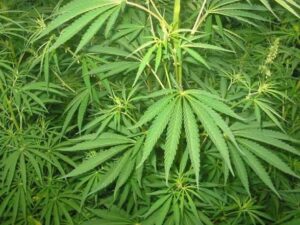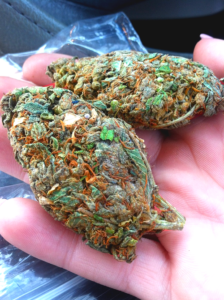
Weed in Baotou — a practical, safety-first guide.
Quick summary (one line): cannabis (marijuana) for recreational use is illegal and strictly controlled across China — including Baotou — while limited industrial hemp production is permitted under strict regulations; penalties for possession, trafficking or cultivation can be severe and enforcement is active. Weed in Baotou
Introduction Weed in Baotou
This long-form guide explains what “weed” (cannabis) means in the context of Baotou — a major city in China’s Inner Mongolia Autonomous Region — and provides practical, safety-first information for residents and visitors. It covers the legal framework, likely consequences, health considerations, local background, harm-reduction advice, and frequently asked questions. Throughout, I avoid providing any instructions that would help you obtain, grow, or distribute illegal drugs. Instead the focus is facts, risk reduction, and alternatives. Weed in Baotou
Why this matters: China has strict, zero-tolerance drug policies. Foreigners and residents alike can face administrative detention, criminal charges, fines, deportation, job loss, or other penalties for involvement with narcotics. Knowing the law and the consequences helps you avoid serious trouble. Weed in Baotou
What “weed” means in China and Baotou
When people say “weed” they typically mean parts of the cannabis plant used for their psychoactive effects (THC). China’s legal distinction is important: Weed in Baotou
- Recreational cannabis (THC-containing marijuana/hashish): Prohibited. Possession, use, sale, transport and production for recreational use are illegal throughout the People’s Republic of China. (Wikipedia)
- Industrial hemp: Allowed in limited, regulated contexts. Hemp used for fiber, seed or approved industrial processing is legally cultivated in some regions under strict controls — so long as THC stays below regulatory thresholds. This is not a license to possess or use psychoactive cannabis.
- CBD/medical derivatives: Regulatory treatment is strict and unclear in many parts of China; some jurisdictions treat CBD as a controlled substance. Hong Kong, for example, moved to classify CBD as dangerous; mainland regulations are similarly restrictive and evolving. Do not assume CBD products are legal or tolerated.
Legal framework and penalties — the big-picture Weed in Baotou
China’s drug-control system blends administrative penalties (detention, fines, rehabilitation) and criminal penalties for more serious offenses (trafficking, large-scale manufacture). Key points:
- Possession and use: Administrative detention (days to weeks), fines, mandatory rehab programs are possible; criminal charges may be brought in more serious or repeat cases.
- Trafficking, large-scale cultivation or sale: Criminal law carries heavy sentences, including long prison terms and in extreme, rare cases with aggravating circumstances, very severe punishments. Chinese law emphasizes strict punitive measures against trafficking.
Baotou: local context and history Weed in Baotou
Baotou is an industrial and regional administrative center in Inner Mongolia with a complex social history. In past decades the city has been subject to drug control campaigns and public health efforts aimed at curbing substance use. While modern Baotou emphasizes economic development and tourism, the public-security apparatus remains well-organized and proactive when tackling narcotics-related issues. This means drug-related enforcement operations and anti-narcotics messaging are part of the local landscape.
Health, harm reduction and medical facts Weed in Baotou
Even putting legality aside, there are health and safety considerations anyone thinking about cannabis should know:
- Short-term effects: altered perception, impaired coordination and judgment, increased heart rate, anxiety or panic in sensitive individuals. Avoid activities requiring attention (driving, operating machinery) while under any intoxicant.
- Long-term risks: heavy, long-term use is associated with dependence risk, potential cognitive effects (especially for young people) and respiratory irritation if smoked. Mental health risks increase for people predisposed to psychosis.
- Contaminants and unknown potency: street products can contain pesticides, synthetic cannabinoids, additives, or unpredictable THC levels; this increases risk of adverse reactions. In a place with strict prohibition, products are rarely quality-controlled.
- Interactions: cannabis can interact with prescription medicines. If you have medical conditions or take medication, consult a health professional — but remember that seeking medical help might involve legal exposure if an illegal substance is involved. Where possible, prioritize health and call local emergency services in acute situations.
The safest choice for your health and legal standing in Baotou is to avoid recreational cannabis entirely. If substance use or dependency is a concern, seek help from qualified health or counseling services; Chinese cities provide rehabilitation and public health resources (though access and privacy rules vary). (Wikipedia)
Travel and practical advice for residents & visitors
If you live in or plan to visit Baotou, follow these practical rules:
- Don’t bring cannabis into China. Smuggling or transporting even small quantities across borders is extremely risky. Penalties apply for importation.
- Don’t possess or use cannabis while in Baotou. Even small amounts can lead to detention, fines, mandatory programs, or criminal cases depending on circumstances. (Wikipedia)
- Don’t rely on “local friends” to shield you. Associations with individuals involved in illegal activity can result in charges or secondary consequences (e.g., workplace dismissal).
- If you’re a foreigner and arrested: insist on consular access (if appropriate for your nationality), but be aware the legal process in China is different from some other countries. Contact your embassy/consulate as soon as it’s safe to do so.
- If you have a medical prescription elsewhere: Chinese authorities typically do not accept foreign prescriptions for controlled substances. Check regulations before traveling with medicines.
- Seek medical help in emergencies. Health comes first; local emergency services will treat acute overdose/poisoning. Legal consequences and health outcomes are separate issues; prioritize getting safe medical care.
Industrial hemp in China — what’s permitted and what’s not
China is a significant global producer of industrial hemp (for fiber, seeds, textiles). But that industry is not a loophole for recreational use:
- Hemp cultivation is allowed under strict regulatory limits (e.g., THC thresholds) and in designated regions or production chains. Processing and sale of industrial hemp products are subject to licensing and oversight.
- Products marketed as “hemp” in China (textiles, seed oil, certain industrial goods) are distinct from cannabis sold for psychoactive use. Consumers should not assume that hemp products contain psychoactive cannabinoids.
- Legal nuances and provincial rules vary. Even where hemp is grown, moving, selling or using extracts for recreational purposes is generally illegal.
Enforcement trends & cautionary notes
A few enforcement and social trends to be aware of:
- Zero-tolerance posture: National policy favors strict enforcement, and high-visibility anti-drug campaigns are common. Cities report periodic crackdowns.
- Public consequences: Beyond legal penalties, individuals found guilty of drug offenses in China may face social and career repercussions, including difficulties securing employment or losing civil privileges. (Wikipedia)
- Rapid legal changes elsewhere: While many countries are rethinking cannabis policy, China’s approach remains conservative. Don’t assume global trends translate to local tolerance. Examples like Hong Kong’s CBD regulation show how authorities may narrow access even for compounds considered benign elsewhere.
Safer alternatives and coping strategies
If you use cannabis for anxiety, sleep, pain relief or recreation, consider safer, legal alternatives while in Baotou:
- Non-psychoactive therapies: mindfulness, cognitive behavioral therapy, physiotherapy, exercise, sleep hygiene and counseling.
- Legal over-the-counter options: common OTC analgesics or herbal teas—but check local regulations and drug interactions.
- Medical care: if you have chronic conditions, consult a licensed physician in China for assessment and legal treatment options.
- Support networks: local counseling and community health services may offer support for substance use concerns without immediate punitive consequences; availability varies by city.
Choosing legal, health-focused alternatives keeps you safe legally and often improves long-term outcomes.
Sample local resources & where to look for help (Baotou)
- Local hospitals and emergency services: for acute medical issues related to intoxication or poisoning.
- Municipal public health bureaus: can guide on substance-use support programs.
- Consulate/Embassy (if you’re a foreign national): contact for legal aid referrals and consular assistance if detained.
- Chinese government and public security websites: authoritative sources for law and regulation. (See outbound links / citations below for details.)
FAQs — short, direct answers
Q1: Is weed legal in Baotou?
A: No. Recreational cannabis is illegal across China, including Baotou. Penalties can range from administrative detention to criminal charges depending on amount and circumstances. (Wikipedia)
Q2: What happens if I’m caught with a small amount?
A: Outcomes vary: administrative detention, fines, mandatory counseling/treatment, or in aggravated cases, criminal prosecution. Chinese law and local enforcement can be strict even for small quantities.
Q3: Is CBD legal?
A: CBD’s legal status in China is unsettled and tends toward restrictive treatment; don’t assume CBD products are permitted. Hong Kong’s recent CBD classification as a controlled substance shows the cautious approach in the region.
Q4: What about hemp products from China?
A: Industrial hemp with low THC is permitted under strict regulations, mostly for fiber, seed and certain industrial uses — not for recreational consumption. Licensing and THC thresholds apply.
Q5: I’m a foreigner — will I be deported?
A: Deportation is a possible outcome alongside criminal or administrative penalties, particularly after conviction. Each case differs; contact your embassy/consulate immediately.
Final words — safe, lawful, practical
If you’re in Baotou (or anywhere in mainland China), the safest, most responsible choice is to avoid recreational cannabis entirely. The combination of strict laws, active enforcement and high social costs makes possession or use a serious risk. If you’re seeking relief for medical symptoms or are struggling with substance use, prioritize licensed medical care and legal treatment routes.
I have used Global Weedworld (Globalweedworld@galaxyhit.com) at least 4-10 times and every time it has been a top notch.
He is the best local plug you can find around. He is very pleasant, friendly and fast. He is a lifesaver.
He sells top shelf WEED and other stuffs at moderate prices. I will always recommend this guy when people ask me my ” go-to”.
All you have to do is follow his instructions.
Just send him an email and I bet you will come back for more once you finish with what you bought because his quality is amazing.
Also Contact him on his telegram link telegramhttps://t.me/GlobalweedWorld
⚠️ Know that he do not have telegram channels only the telegram link above

The strain was exactly what I was looking for. It had that perfect balance, and the high was smooth. Also, the packaging was discreet and professional. Really impressed
I’ve been buying online for a while, but this shop’s service and product quality set them apart.
Everything was fresh, potent, and the customer service is outstanding
My first purchase and I’m hooked.
Excellent product and the customer support was super helpful in answering all my questions. Highly recommend this site
From browsing to checkout, everything was seamless. Delivery was on time, and the product exceeded my expectations.
I’ll be recommending this to my friends
I’ve been buying from a lot of different places, but this one stands out. The bud is top-notch, and the prices are reasonable.
Will be ordering again soon! Amazing experience! The product was exactly as described,
and the packaging was on point—safe and odor-free. Thank you!
Third order in a row — flawless. Told my friends — now they’re ordering too. This is how weed buying should be. Clean, easy, reliable.
Delivery was crazy fast, and the product… This place is setting the bar for online weed shops. Keep doing what you’re doing. You’ve got a loyal customer for life.
Best decision I made all week. Real ones know. This site is fire. I don’t usually leave reviews, but this deserved one.
I was worried about ordering online, but the packaging was perfect completely. You can tell they care about their customers. Fast replies and reliable support.